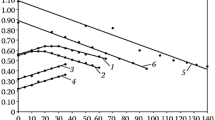Abstract
MANY modern technical developments have been made by preparing materials of greater suitability for specific purposes from the naturally occurring materials which were employed earlier. An obvious example of this is seen in the superior materials now used for building construction and a comparison with natural clay which is still used in some places. Though air has, wittingly or unwittingly, been used for combustion from very early times, the bulk manipulation of gases on a commercial scale is such a modern development that the commercial use of oxygen for combustion is only now just becoming possible. The use of an oxygen-enriched air blast does not appreciably increase the heat of combustion, but it does reduce the cooling effect of the nitrogen present in air which is normally passed through furnaces. The magnitude of this effect is appreciated when it is pointed out that during the combustion of carbon to the dioxide with ordinary air, the weight of nitrogen involved is nearly ten times the weight of the carbon. Under certain conditions thermal recuperation or regeneration of the heat from the gases leaving the furnace is possible, but at high temperatures this is inefficient and costly.
Similar content being viewed by others
References
Harrison, J. L., Newell, W. C., and Hartley, A., J. Iron and Steel Inst., 281 (July 1948).
Author information
Authors and Affiliations
Rights and permissions
About this article
Cite this article
NEWELL, W. Application of Oxygen to Steel-Making. Nature 162, 518–519 (1948). https://doi.org/10.1038/162518a0
Issue Date:
DOI: https://doi.org/10.1038/162518a0
- Springer Nature Limited




